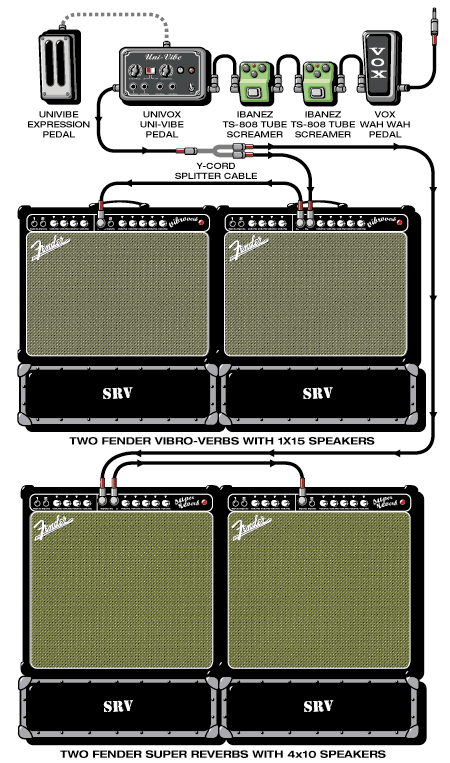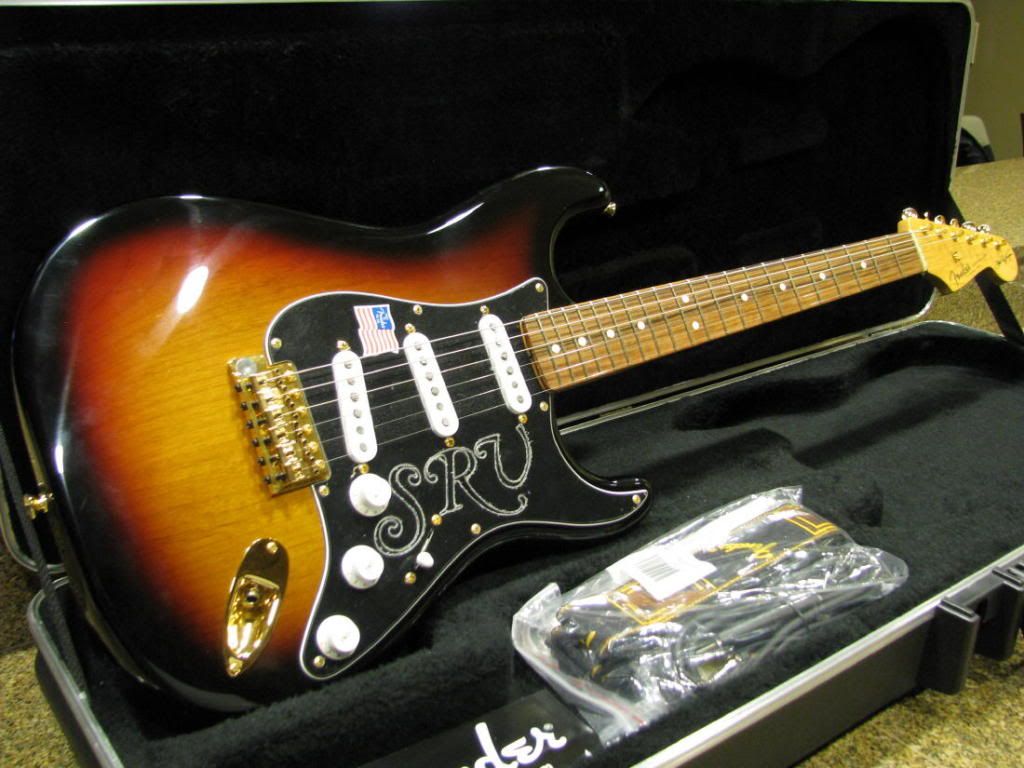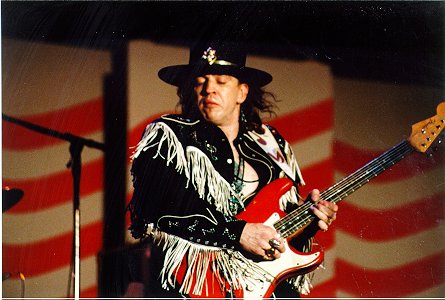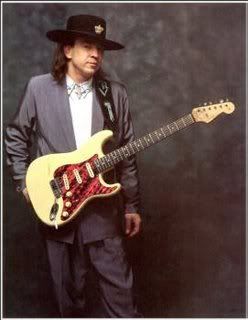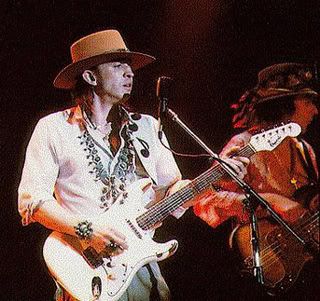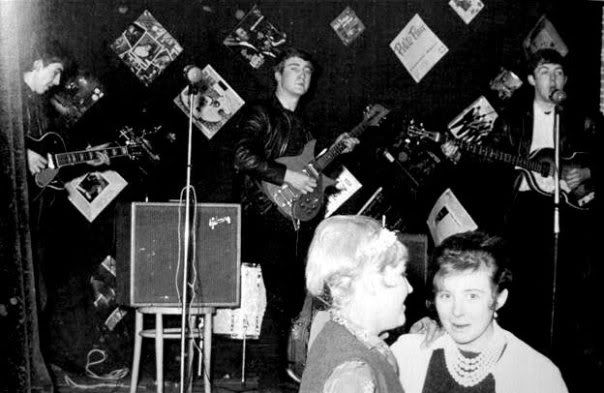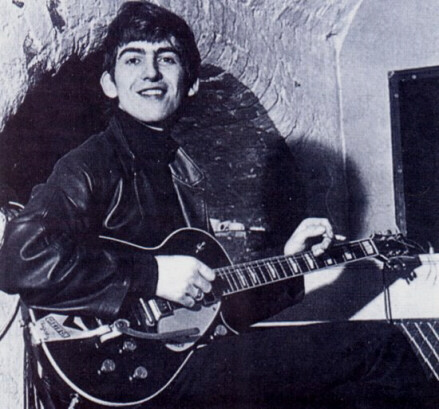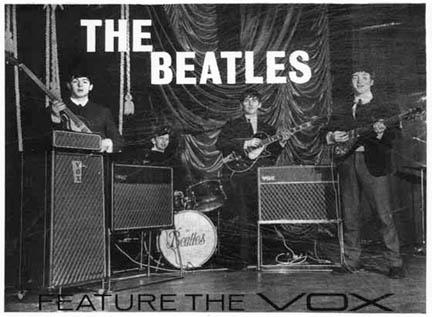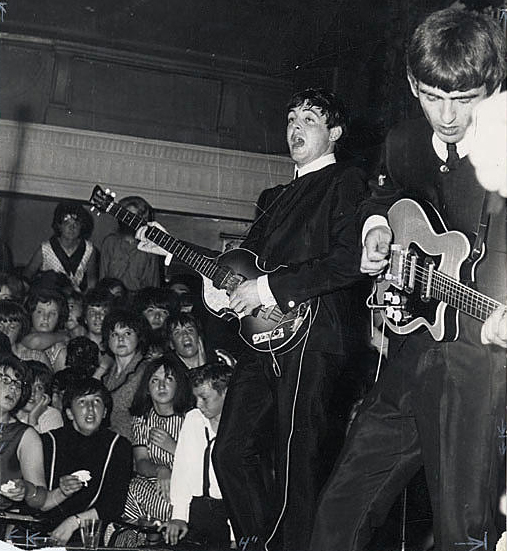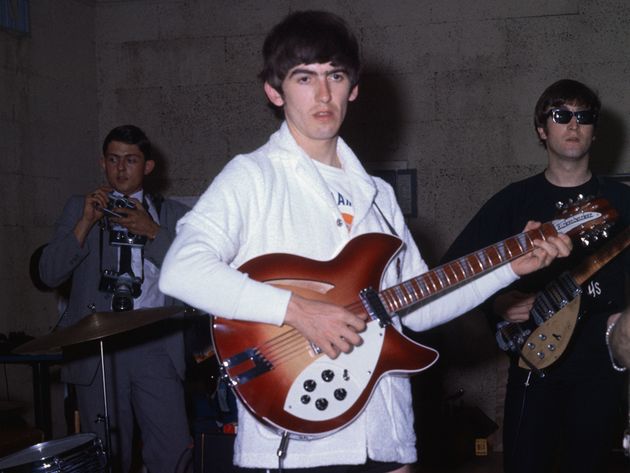Vaughan received numerous accolades as a player and was featured in many magazine articles, especially those having to do with the guitar. His young life ended in a twist of fate that harkens back to Buddy Hollies story,
 |
| Last concert |
Vaughan begged for the last seat on a helicopter that was transferring the performers back to Chicago. His older brother Jimmie and Jimmie’s wife made reservation to be flown back after a concert both brothers had played with Eric Clapton.
There were three seats reserved for Stevie and his family, but three members of Clapton’s crew had taken the seats, leaving only one remaining seat. Jimmie and wife took the next copter. The night was foggy and the dew was building up. Apparently the visibility was bad.
The pilot guided the helicopter over a golf course at low altitude. He somehow crashed into a 300 foot high ski slope.
The impact killed all aboard. There was no fire or explosion. The passenger’s bodies were scattered on the slope. An autopsy revealed that Stevie Ray Vaughan died of multiple injuries that he would have never survived. Vaughan was only 35
Stevie Ray Vaughan grew up in Dallas Texas. His older brother Jimmy Vaughan was his inspiration. Stevie Ray was born to play the blues.
 |
| Triple Threat |
| Double Trouble |
In 1982 he gained fame when he performed at the Montreux Jazz Festival. A year later he released the album Texas Flood, which sold over a half a million copies.
Stevie Ray Vaughan had trouble with substance abuse for much of his life. He finally became sober in 1986. It paid off sine he went on to headline concerts with Jeff Beck and a few years later with Joe Cocker.
Vaughan’s guitar playing tools, his choice of guitars and amps were most interesting and SRV favored vintage equipment. He also preferred very loud amplifiers with a clean sound.
He did not make much use of effects pedals. His tone was clean and dry and he relied on the natural headroom produced by a clean Fender amp.
He linked amplifiers together to make his sound big. At times he employed a rotating speaker.
 |
| Number One Through the Years |
Stevie Ray Vaughan used it on all of his albums. There is a burn mark at the bottom of the headstock where Vaughan had wedged a cigarette between the strings and left it there too long. The neck has a thick D profile. The nut width was very wide at 17⁄8 inches.
The radius was 7.25”. It had been refretted many times. The relief at the 9th fret was .012” The nut had been changed to a bone nut. Stevie Ray’s friend and guitar tech, Rene Martinez took care of all of his guitars. At some point a piece of stage rigging had fallen on Number One, damaging the neck. Rene replaced the neck with another one off of a guitar that Vaughan called Red.
As a tribute to Hendrix, Stevie Ray put a left-hand bridge saddle on the guitar so the tremolo bar would be on the top of the guitar. After Vaughan’s death, the original neck, which had been saved, was reinstalled on Number One. Jimmie Vaughan now owns this guitar.
Prior to his death, Stevie Ray Vaughan had been asked by the Fender Musical Instruments Corporation if they could create a model of this guitar as a limited production. Vaughan collaborated with the Fender Folks for this Artist Signature model.
Vaughan was killed at the time of production and Jimmie Vaughan asked Fender if they could have the guitar ready so it would be offered in 1992. Fender Custom Shop builder Larry Brooks put 600 windings on each pickup and made sure the polarity of the middle pickup was reversed to reduce hum. This guitar was a little different than the original.
The body was alder and the neck was maple, but it came with a pau ferro fretboard. The standard strings are .010 - .046 light gauge models. Stevie Ray Vaughan generally used medium gauge strings that were .013 - .058. It is rumored that at one point in his career he was using .018 - .072 gauge strings. The guitar was finished on schedule and it was one of Fender’s more popular models.
Stevie Ray’s other Stratocaster was known as Yellow. This was a 1959 Fender Stratocaster that was formerly owned by the lead guitarist from Vanilla Fudge; Vince Martell. Martell sold it to a guy named Charley Wirz who proceeded to hollow out the guitars center to make room for humbucking pickups.
Sometime in 1983, Vaughan purchased a 1962 sunburst Fender Stratocaster. Vaughan had the guitar repainted fiesta red by the Fender Musical Instrument Company.
In 1989, Stevie Ray Vaughan made a few modifications by putting a “SRV” sticker on the pickguard and installing a left-handed neck. This guitar was named “Red.”
 |
| Note the white knobs |
Stevie Ray Vaughan bought a guitar in Norfolk Virginia. He intended to give it away as a prize at one of his shows, but he became attached to it and gave away a different guitar. This is a 1961 Fender Stratocaster with butterscotch finished. His guitar tech, Rene Martinez, added a tiger striped pickguard that resembled one that Buddy Guy had on one of his guitars. Except for the pickguard and the SRV sticker it was stock. It was known as Scotch.
Charley Wirz owned Charley’s Guitar Shop in Dallas Texas. In 1983 he built a custom made Stratocaster style guitar as a gift for his friend Stevie Ray Vaughan.
It was white and had a neck plate which was engraved with the phrase, “To Stevie Ray Vaughan, more in 84”.
This guitar was unique since it had three Danelectro lipstick pickups. This guitar was named, Charley after Charley Wirz.
 |
| SRV with Lenny |
Perhaps one of the more touching stories in Vaughan’s life regarded a 1963-64 Stratocaster that was a gift to Stevie Ray from his wife, Lenora. Stevie Ray was 26 years old and still standing in the shadow of his big brother Jimmy Vaughan. Stevie Ray met Lenora at a Halloween party when he was playing at a club. There was a brief courtship, they both had fallen hard for each other and were soon married. At the time he was playing with the Triple Threat band.
 |
| Jimmie,daughter, Big Jim, SRV and Lenora |
Lenora saw how much that Stevie wanted that guitar, but since they were poor and the price was $350, they could not afford it.
 |
| Stevie Ray and Lenora |
Then he asked her to listen to a new song that he wrote (on this guitar) called Lenny, his pet name for her. She states, “It was beautiful, how can you ever stop loving something like that. I’ve never once in my life listened that that song without crying.” Sometime later he received a Charvel neck with a maple fretboard from his friend Billy Gibbons. He installed the neck on Lenny. He also etched his name into the guitar’s neck plate as a point of pride.
Stevie Ray Vaughan played a Guild JF6512 on MTV Unplugged and on a song called Life By The Drop.
Stevie Ray Vaughan like the sound of amps linked together. He frequently used two 1964 Blackface Fender Vibroverb amplifiers, one of which had a 15” speaker and the other had the stock twin 10” speakers. These amps were both rated at 40 watts.
Within a year, Fender added two more 10” speakers to this amp and it became the Super Reverb. Vaughan also utilized twin Super Reverbs. He also used a Marshall Club and Country amp that contained two 12” JBL speaker. Vaughan used the Fender amps for distortion and the Marshall for a clean sound. Early in his career Vaughan had befriended and received technical assistance from amp guru César Díaz.
 |
| 1964 Fender Vibroverb |
Stevie Ray was very adamant about the way he set the controls; volume at 6, treble at 5 ½ and bass at 4. In order to prevent problems, Diaz would back off the volume control by unscrewing the knob and turning the potentiometer back, and replacing the knob, so it would appear to be at the same level.
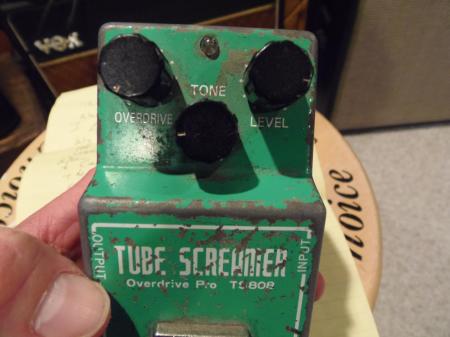 |
| SRV's Tube Screamer |
He used a Fender Vibratone, which is a standalone revolving speaker unit that Fender produced for a while. He also utilized a Dallas Arbiter Fuzz Face, Roger Mayer Octavia pedal and several Vox Wah pedals.
\








